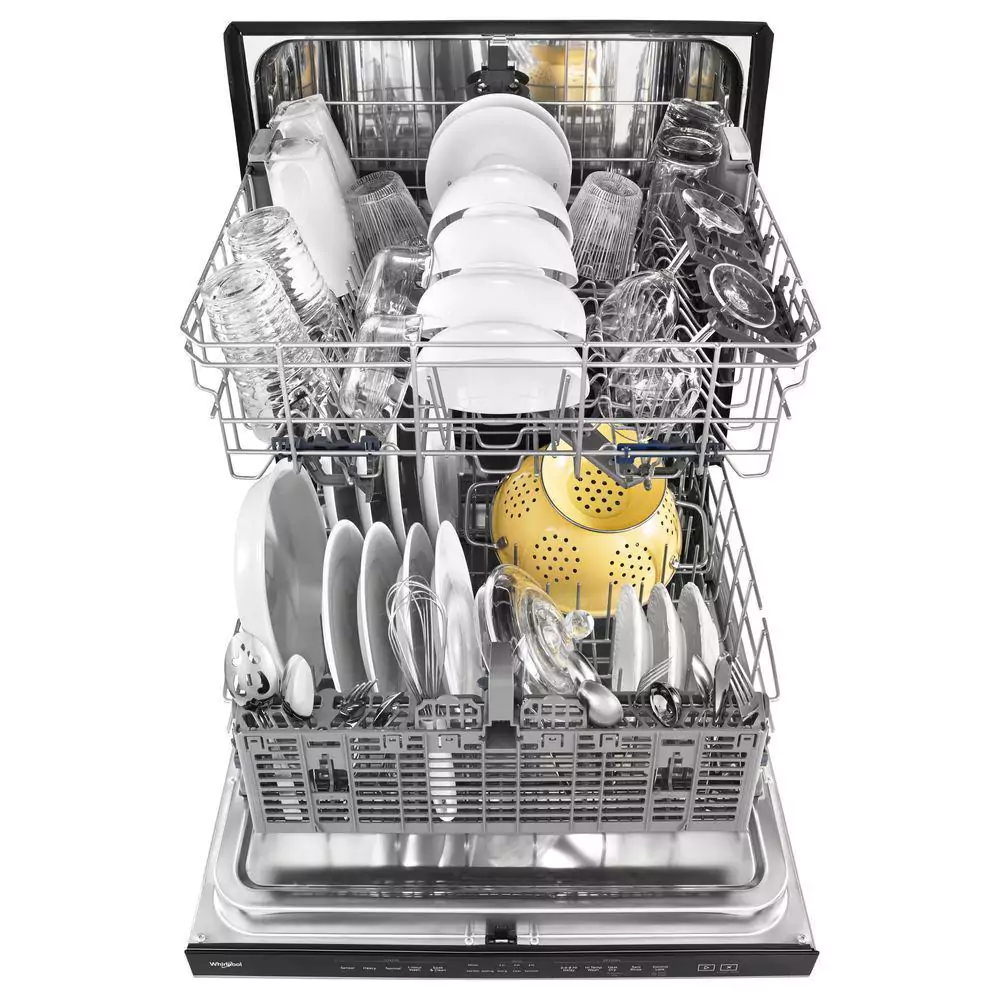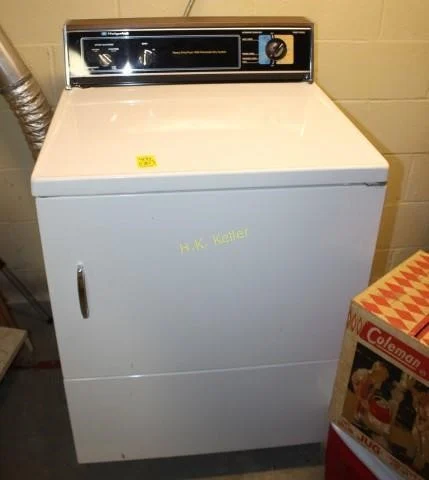How to load dishwasher properly
Loading a dishwasher properly can help ensure that your dishes come out clean and undamaged while also maximizing the dishwasher’s efficiency. Here are some do’s and don’ts for loading a dishwasher:
Do’s:
- Scrape or rinse off food residue: Before placing your dishes in the dishwasher, scrape off large food particles and give them a quick rinse if needed. This prevents food debris from clogging the dishwasher’s filter and spray arms.
- Load large items on the sides and back: Place large pots, pans, and baking sheets along the sides and at the back of the dishwasher. This allows for better water circulation and ensures smaller items in the front get cleaned properly.
- Face dirty surfaces inward: When placing dishes like plates, bowls, and utensils, make sure their soiled sides face the center of the dishwasher for better cleaning.
- Use the top rack for fragile items: Delicate items like glasses, cups, and plastic containers should be loaded on the top rack. Angle them downward to allow water to run off and prevent pooling.
- Place flatware in the utensil basket: Place forks, knives, spoons, and other utensils in the utensil basket with handles facing down to ensure they get cleaned thoroughly.
- Use dishwasher-safe materials: Ensure that all items you put in the dishwasher are dishwasher-safe. Most items will have a label indicating if they are safe for dishwasher use.
- Check for spinning clearance: Ensure that there is enough space for the dishwasher’s spray arms to rotate freely without obstruction. Be mindful not to block these arms with large items.
- Load items securely: Make sure items are loaded securely and not touching each other. This helps prevent them from moving around during the wash cycle and ensures thorough cleaning.
Don’ts:
- Don’t overcrowd the dishwasher: Overloading the dishwasher can lead to inadequate cleaning. Leave some space between items to allow water and detergent to reach all surfaces.
- Don’t block the detergent dispenser: Avoid placing large items or utensils in front of the detergent dispenser, as it needs to open and release the detergent during the wash cycle.
- Don’t mix metals: Try to avoid placing different types of metals, such as stainless steel and silver, in the same load. They can interact and cause discoloration or damage.
- Don’t put wood, cast iron, or nonstick cookware: Items like wooden cutting boards, cast iron pans, and nonstick cookware should not be placed in the dishwasher, as the high heat and moisture can damage them.
- Don’t pre-wash excessively: While it’s important to remove excess food, avoid pre-washing dishes too thoroughly, as modern dishwashers are designed to work with some food residue to activate detergents properly.
- Don’t stack dishes or glassware too closely: Avoid stacking items too closely together, as this can prevent water from reaching all surfaces and lead to poor cleaning results.
- Don’t use too much detergent: Using too much detergent can lead to a buildup of soap residue on your dishes. Follow the manufacturer’s guidelines for detergent usage.
By following these do’s and don’ts, you can ensure that your dishwasher operates efficiently and your dishes come out clean and in good condition. Additionally, referring to your dishwasher’s user manual for specific loading instructions is always a good idea, as different models may have unique features and recommendations.
- Use the right type and amount of dishwasher detergent according to the manufacturer’s guidelines. Using the correct detergent is essential for effective cleaning.
Remember that loading a dishwasher may vary slightly depending on the model and brand of the dishwasher, so it’s always a good idea to refer to the user manual for specific instructions. Additionally, avoid overloading the dishwasher to ensure that water and detergent can reach all surfaces, resulting in cleaner and more efficient wash cycles.
Bottom Rack:
- Pots, Pans, and Large Items: Place large cookware items like pots, pans, and baking sheets on the sides and back of the bottom rack. This allows for better water circulation and ensures that they don’t block the spray arm’s rotation.
- Plates and Serving Dishes: Load plates and larger serving dishes in the bottom rack. Position them so that the soiled surfaces face the center of the dishwasher. Lean larger items slightly inward to accommodate more dishes.
- Bowls: Place bowls upside down for better cleaning. Nest smaller bowls inside larger ones to maximize space.
Utensil Basket (Silverware Tray):
- Utensils: Place forks, knives, spoons, and other utensils in the utensil basket with the handles facing down. This allows water to reach the soiled ends for thorough cleaning.
- Use Dividers: If your utensil basket has dividers, use them to separate utensils, preventing them from sticking together and ensuring better cleaning.
Top Rack:
- Glasses and Cups: Place glasses and cups on the top rack. Angle them downward to allow water to run off and prevent pooling. Avoid placing tall items like wine glasses where they may interfere with the spray arm’s rotation.
- Small Bowls and Saucers: Load smaller bowls, saucers, and shallow dishes on the top rack. Ensure they are secure and not touching each other.
- Plastic Items: Because plastic items are more sensitive to heat, it’s a good idea to load them on the top rack to prevent potential warping or damage.
Door or Fold-Down Racks (if available): Some dishwashers come with additional racks on the door or fold-down racks for placing smaller items or extra utensils. Utilize these spaces for items like baby bottle parts, lids, and small kitchen tools.
General Tips:
- Avoid overcrowding: Ensure that you don’t overload the dishwasher, as this can obstruct water and detergent flow, leading to poor cleaning results.
- Check for spinning clearance: Verify that there’s enough space for the dishwasher’s spray arms to rotate freely without any obstructions.
- Secure items: Make sure all items are loaded securely to prevent them from moving around during the wash cycle.
- Avoid blocking the detergent dispenser: Ensure that no large items or utensils are placed in front of the detergent dispenser, as it needs to open and release the detergent during the wash cycle.
- Refer to the user manual: Different dishwasher models may have unique features and loading recommendations, so consult your dishwasher’s user manual for specific instructions.
Properly loading your dishwasher in this manner allows for optimal water and detergent distribution, resulting in cleaner dishes and more efficient wash cycles.







